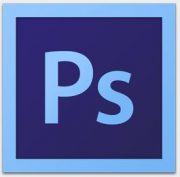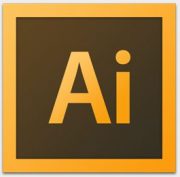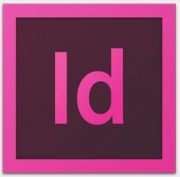User Interface (UI)
First impressions count!
So what is a UI? As the acronym suggests, the User Interface is everything the seen by end-user, including the layout of elements they will interact with.
This includes menus, branding, positioning of titles and content, typography, image styles, colours, backgrounds, button styles and more. It even relates to white space – otherwise known as the “absence” of information, which can draw a users attention to something important, and provides an important role in ensuring a site looks sufficiently “decluttered”.
Often confused and/or used interchangeably with UX (user experience), it goes to the heart of branding, drives the overall feel of a website (rather than it’s usability) and in that sense, is more likely to make or break your decision on whether a site looks appealing. Attention to detail is something we pride ourselves on at 21 Designs, and so the touchy-feely part of building a website is important to us. It’s that indescribable X-factor, the thing that gives you a warm fuzzy feeling at first glance which is what we strive for in all of our custom designs.
User Experience (UX)
Looking pretty is one thing, but usability rules
If your users can’t navigate your site, or they don’t understand where to go or what to do, then it really doesn’t matter if your website looks pretty.
In order to resonate with your audience, they must immediately understand how it works. Too often we see websites with a unique navigation style that takes several minutes to work out, or even worse, instructions on screen telling you how to use the website! What could be more self indulgent?
If it’s not intuitive, and it’s not accessible, then it simply isn’t going to appeal to those who are using it. Most people don’t have time to learn how to drive something new, and with the advent of mobile phone browsing, the lack of patience is increasing, as is the importance of making the users experience a positive one.
All the staff at 21 Designs are strong advocates of UX testing and standards, because we know it matters. If you’re tired of crazy ideas, and interfaces that simply don’t work, see how we can improve your conversions and improve the overall experience for your website visitors.
The software we use
 Adobe Photoshop
Adobe Photoshop
Any web designer worth their salt knows this is a must for producing quality artwork. Using Photoshop, we can do some amazing things with the images you already have, and even more with those that you don’t!
 Adobe Illustrator
Adobe Illustrator
A necessity for producing pixel perfect logos, and high-resolution artwork for print or simply to be able to scale up the original, Illustrator provides the tools Photoshop doesn’t to get your branding right.
 Adobe InDesign
Adobe InDesign
No, we’re not a print publishing company, but we do occasionally get called on to produce brochures, leaflets, business cards and whitepapers “from scratch”. To make the printer happy, InDesign plays a crucial role.
The technologies we implement
 HTML5
HTML5
HTML5 is the current standard specification for markup for documents presented on the web, and is the core language output by popular CMS systems and shopping carts such as OpenCart, WordPress, WooCommerce, Magento, Drupal, Shopify, BigCommerce, Wix and many more.
 CSS3
CSS3
It’s pretty difficult to produce a quality web page without a knowledge of CSS. CSS3 is the current standard used to style web pages (coulours, fonts, layouts etc.), and we like to think we’re pretty good at it.
 jQuery
jQuery
Ever wondered how someone gets a menu to move, or a window to popup, an image to show full screen or a map to respond to the users actions? More often than not, it’s jQuery, a Javascript library that makes writing Javascript easier and faster.
What you see is not always what you get…
There are a few key ingredients every designer needs to consider when planning a new website, layout, template or component.
In years gone by, all that mattered was the presentation – style and branding. This became clearly evident with the introduction of Flash (Now Adobe Flash, formerly Macromedia) when everyone wanted animation, and then even in the early days of Web 2.0, when we started seeing nonsensical sites that used illogical, using unique menu systems that you had to “learn how to use”.
Needless to they made a dogs breakfast look good.
It’s a pretty well known fact now however, that there’s more to a successful design than just “what it looks like”. Designers now need to be multi-skilled, understanding how the user might interact with various elements on screen, and whether or not the “mix is right”. This includes images, text, white space, the good old “call to action” and much more.
At 21 Designs, we still start with your brand as the focal point, using a variety of resources for inspiration, and with tools such as Photoshop and Illustrator, we deliver samples, concepts and mockups that will try to illustrate what your finished product will look like.
It’s how we finish that makes the difference
We place a strong focus on the user experience, analysis of your site for usability, ensuring it all just makes sense. After all, if the person visiting your website has a bad time of it, or don’t understand how to find what they’re after, then they’re not likely to come back.
So the experience needs to be positive in every way, not just visually, but from a point of usability, and even just confidence that they’re doing the right thing and in the right place.
To do this, we employ a variety of services, ensuring that your site not only validates, but so that it performs in all scenarios and on all devices, and we also bring our skills in HTML, CSS and Javascript to the table, which allows us to further tweak your designs, customise your page layouts and add crucial functionality in order to achieve the best end result for your visitors.
Why is this important?
Not only will it reduce the frustration of your customers and the overhead involved in dealing with complaints, but it will help convert your existing website traffic into something that’s actually tangible – more leads, more conversions on those leads and ultimately, more sales.
